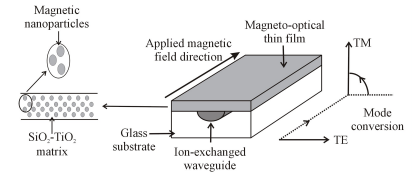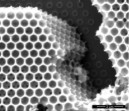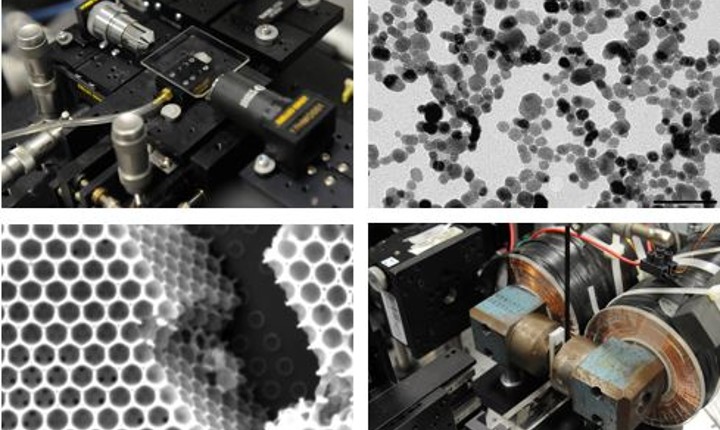Magneto-optical devices: the composite approach
We develop a composite approach to realize magneto-optical devices. It is based on a silica type matrix doped by magnetic nanoparticles. This material is fully compatible with integrated optics technologies and allows the realization of magneto-optical mode converters on glass.
Integrated magneto-optical devices, such as nonreciprocal optical isolators, are always the lacking elements among all the functions which already have been integrated : lasers, filters, photo-detectors, multiplexers, amplifiers, modulators, switches…That is due to the difficulties to embbed magneto-optical materials with classical integrated technologies. Yttrium Iron Garnet (YIG), widely used in bulk optical isolators, requires an annealing temperature as high as 700°C to be magnetoactive. This temperature is evidently not so compatible with integrated optical technologies. To overcome this problem, the realization of composite magneto-optical thin films made of silica-type matrix doped by magnetic nanoparticles has been demonstrated [http://dx.doi.org/10.1063/1.3079094]. In this approach, instead of creating nanocrystals inside the thin film by a high temperature annealing, already crystallized cobalt ferrite (CoFe2O4) nanoparticles are dispersed inside a silica sol-gel solution. Then, magneto-optical thin films are obtained by dipping a substrate in this solution and the temperature required to finalize the film is about 100 °C.
Due to the low temperature of the thermal treament, such a material is fully compatibles with glass ion-exchanged integrated optics technology. Thus hybrid structures made of a composite thin film coated on ion-exchanged glass waveguides have been realized. They behave as integrated non-reciprocal TE/TM mode converter [http://dx.doi.org/10.1063/1.3671180].

Such a composite approach has also been applied to the realization of 3D magneto-photonic crystals which evidence a spectral modification of the Faraday effect in the area of the band-gap. [http://dx.doi.org/10.1364/OME.3.000935, Proceedings of SPIE, 8767-32, 2013, http://dx.doi.org/10.1117/12.2031895]


